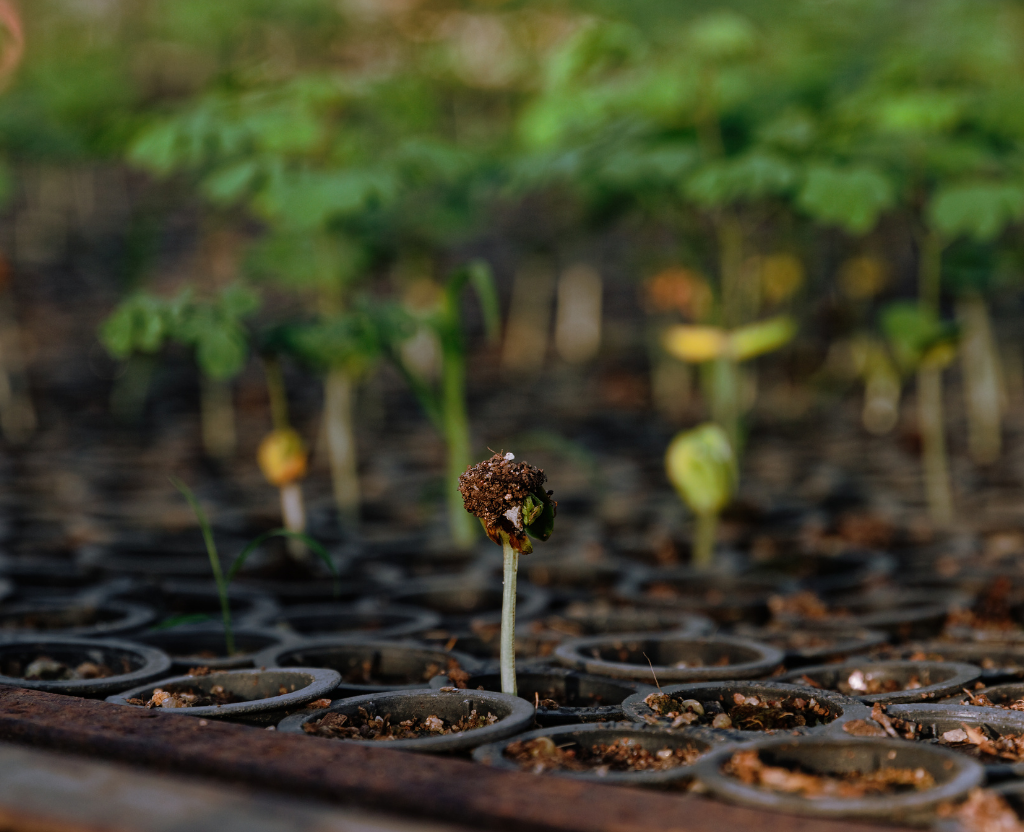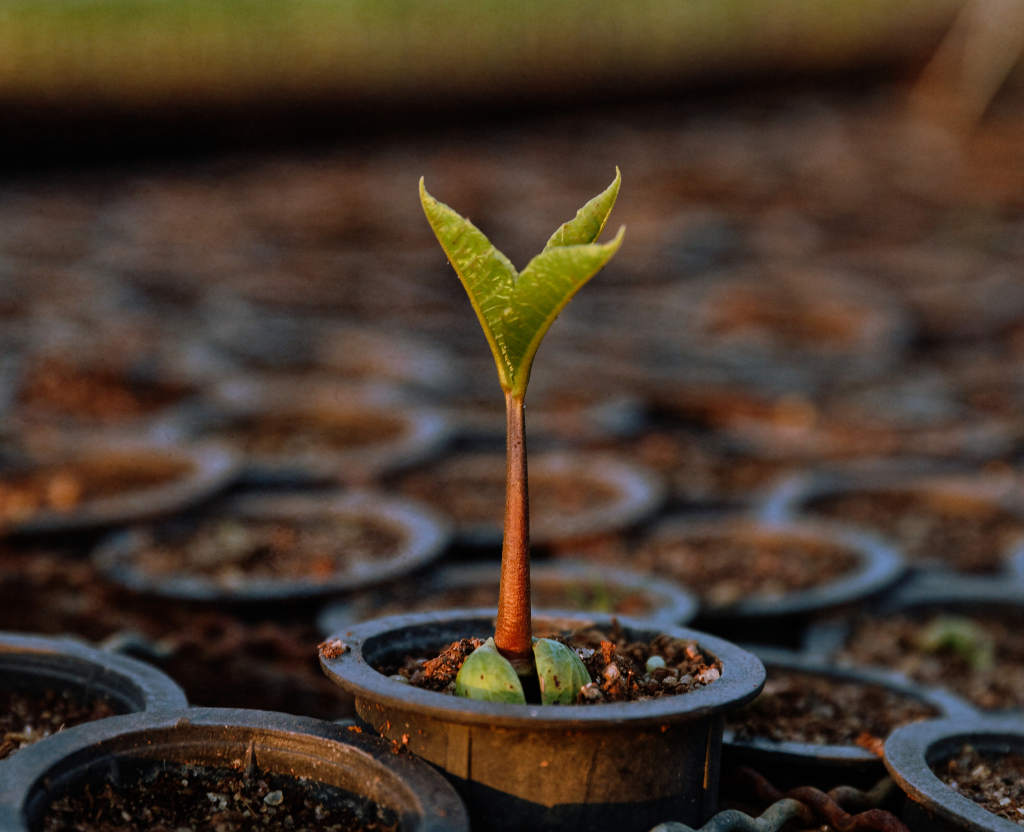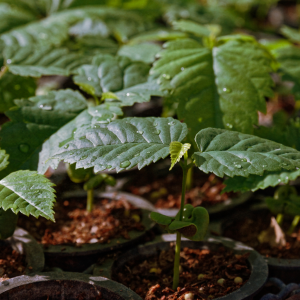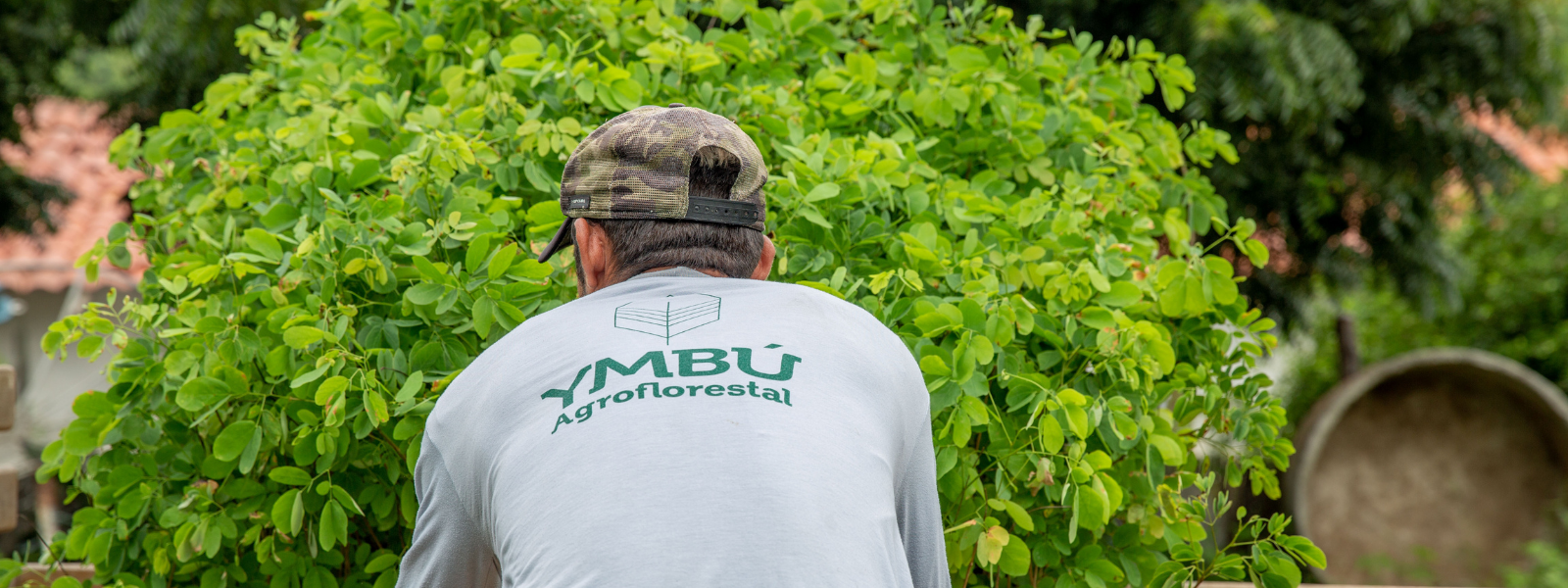Ymbu
Entitled by Euclides da Cunha as the “sacred tree of the sertão”, the umbuzeiro is also known as imbuzeiro (scientific name: Spondias tuberosa).
Its fruit is the umbu or imbu.
The word that gave it this name is “ymbu”, of Tupi-Guarani origin, meaning “tree that gives water”, a reference to its characteristic of storing water, especially the root, a necessary quality for survival over long periods of drought in its natural habitat, the Caatinga.
The plant can reach seven meters, has a short trunk and an umbrella-shaped crown.
The flowers are white, grouped, fragrant, with nectar that is removed by bees to feed and produce honey.
Ymbu Agroflorestal was created with the purpose of actively participating in the reconstruction of a greener, more productive and wetter planet.
Inspired by the emblematic tree, Ymbu Agroflorestal is located 70km from Fortaleza, at the foot of the Massiço de Baturité, State of Ceará – Northeast Brazil.


Surrounded by the largest environmental protection area in the state, it is a transition region that encompasses biomes of the Atlantic Forest, Dry Forest and Caatinga, with an exuberant biodiversity.
There, they develop reforestation projects in agroforestry systems and restoration of degraded areas.
Their main focus is on the production of seedlings and development of quality forestry planting techniques, always following the pillars of sustainability: social, environmental and economic.
With a unique technology in the State, the idea is to spread the forestry sector, bringing tools and solutions both for commercial reforestation and for the recovery and enrichment of degraded areas.
The main goal it is for micro-climates to be a harmonious interdependence between the environment and rural producers, with the adoption of techniques suited to climatic conditions and recognition of the suitability of natural resources.

Through the work they have been carrying out for six years in the Caatinga biome, they introduce possibilities to have an area that is highly vegetated and, at the same time, highly productive.
The protection, enrichment and proper management of such forests are essential for the sustainability of life and agriculture.
For this, they focus on the production of seedlings and development of quality forestry planting techniques, maintaining the integrity of that region.
The technology used is unique in the State of Ceará and, with it, Ymbu Agroflorestal aims to spread the forest sector, bringing tools and solutions both for commercial reforestation and for the recovery and enrichment of degraded areas.
As mentioned, following the three pillars of sustainability – economic growth, ecological balance and social progress – Ymbu believes that serious work in the forest sector in the semiarid region is possible and can be a secure source of income for small and large producers.
Here, they invest in coverage as an ecological advantage, avoiding soil degradation and water deficits and seeking to create an ideal microclimate to protect the local fauna and flora. In addition to having the opportunity to offer decent work to the local population with technical training and education promotion.
The aim is always to try and work with integrated systems, cultivating legumes between the rows, thus increasing the ground coverage and at the same time creating a more fertile land.
Having started with some seeds in 2015 and today having more than 600 thousand seedlings already planted on the property alone, they continue with commitment on becoming a statement forest.
Working with natives
Ymbu supplies certified seedlings of the highest quality available on the market, coming from seeds of reliable origin, most of which are harvested from their own property.
Using an ideal substrate mix to ensure proper nutrition and vigour for each species, the use of tubes system of different sizes is an addition when working with larger seedlings, allowing the primary and secondary rooting systems to develop accordingly and guaranteeing a healthier and stronger seedling.
Every month, the seedlings list gets updated – at the moment, it counts with 19 native species, being the sabiá their flagship. In addition, you can find cumaru, barriguda paineira, monkfish, mororó, soapberry, purple ipe, mutamba, jucazeiro, jucá, white jurema, black angico, jacaranda, black aroeira, violete, mulungu, catingueira and abobreira, amongst others.
The Caatinga is considered one of the 37 regions of the planet that must be protected, as it contributes to the maintenance of local and global climatic characteristics, in addition to presenting great biodiversity.
Us, at D-Studio strongly believe that the growth and preservation of forests is urgent and fundamental.



 Climate Change and It’s Alarming New Math
Climate Change and It’s Alarming New Math
Leave a Reply